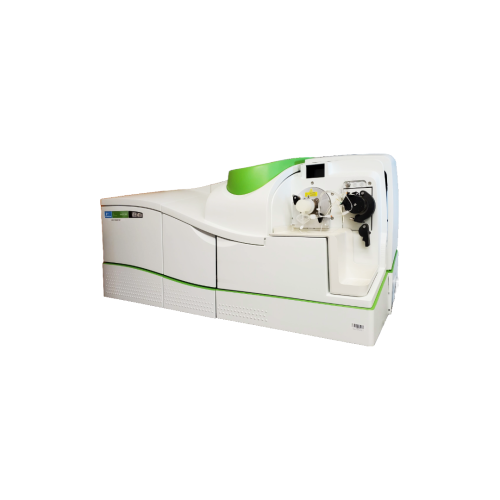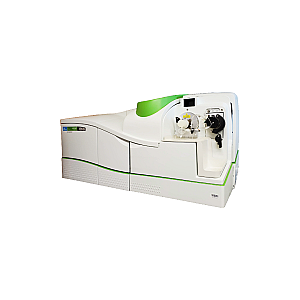The NexION 300 ICP-MS from PerkinElmer is an inductively coupled plasma mass spectrometer specifically designed to meet the demanding requirements of biomedical and environmental monitoring laboratories. Thanks to its patented Universal Cell Technology™, it effectively eliminates interference, ensuring accurate analysis results even in complex matrices. Three operating modes (Standard, Collision, Reaction) provide great flexibility, while its design significantly reduces maintenance requirements. Ideal for applications requiring trace metal detection, biological monitoring or reliable elemental analysis in a medical or pharmaceutical context.
NexION 300 ICP-MS Plasma Mass Spectrometer


Description
The NexION 300 ICP-MS: a Powerful Analytical Platform for Elemental Detection in Human Health
PerkinElmer's NexION 300 ICP-MS is an essential tool in the field of elemental analysis for health and biological sciences. Designed to offer exceptional stability and reliability, this system enables extremely accurate quantification of trace metals, even in complex biological matrices such as blood, urine or tissue. It is particularly useful in biomonitoring, clinical toxicology and environmental analysis impacting human health.
Thanks to its patented Universal Cell Technology™, the NexION 300 offers three distinct operating modes: Standard (without gas), Collision (with kinetic energy discrimination), and Reaction (with quadrupole scanning). This system allows real-time adaptation to analytical needs, whether to eliminate polyatomic interference or achieve very low detection limits. This is particularly useful in the detection of elements such as lead, arsenic, selenium or vanadium, which are often involved in chronic diseases and metabolic disorders.
Its technical design incorporates a Triple Cone Interface coupled with a Quadrupole Ion Deflector, which ensures optimal ion beam definition while eliminating non-ionised materials. This device minimises cell fouling and allows continuous analysis without frequent cleaning, a real advantage for high-throughput laboratories.
The NexION 300 also features a dual-mode detection system (analogue and digital), ensuring a wide dynamic range and simultaneous detection of low and high concentration analytes. Its intuitive software interface, combined with automatic optimisation wizards such as SmartTune and Scheduler, simplifies routine operations, even for inexperienced users.
Its compact benchtop architecture, with no rear connections, optimises laboratory space while providing quick access to components. With its ability to integrate with liquid or ion chromatography systems, the NexION 300 is a complete solution for speciation analysis, identifying not only the quantity but also the chemical form of elements present in a sample. This feature is particularly valuable for assessing the toxicity or bioavailability of metals in the human body.
Features
- Elimination of interference thanks to the collision and reaction cell
- Reaction mode with scanning quadrupole for maximum sensitivity
- Active Standard mode for simple matrices without interference
- Software with drag-and-drop interface and integrated wizards
- SmartTune for automatic parameter optimisation
- Scheduler for programming analyses and delayed starts
- Integrated preventive maintenance alerts
- Integration possible with LC, GC and IC systems via Chromera®
- Semi-quantitative, quantitative, isotope ratio and isotope dilution analysis
- Customisable reports and simplified development method
Technical Details
- Triple Cone Interface with hyper skimmer for narrow ion beam
- Quadrupole Ion Deflector for neutral species elimination
- Dual-mode analogue/digital detector
- RF generator with no moving parts
- Universal Cell Technology™ cell with three modes: Standard, Collision, Reaction
- Scan speed: > 5000 amu/sec
- Mass range: up to 280 amu
- Bench-top design with front access
- Colour plasma viewing window
- Automatic torch positioning on the X, Y and Z axes
- Four-stage vacuum system with high-capacity turbo and primary pumps
Compatible Accessories
- S10 Autosampler for high sampling capacity
- Multiwave 3000 microwave digestion systems
- Laser ablation systems for solid samples
- FIAS for automated hydride element analysis
- SMS 100 mercury analyser for solid/liquid samples
- High-throughput sample introduction kit
- Spare parts: cones, torches, nebulizers, calibration standards